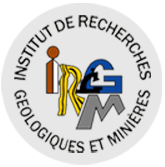Field campaign in Cameroon to study biogeochemical cycles and weathering in a tropical context
On September 19-25, Jean Riotte, Christelle Lagane, and Jean-Jacques Braun from GET/IRD participated to a field campaign at the Nsimi experimental watershed, monitored within the M-TROPICS CZO. Recently, the land use in Nsimi watershed has been changed to agriculture mixed with residual forest and fallow. The objective of the mission was thus to start the monitoring of new variables to understand the impact of land use change on biogeochemical cycles. Partnership in Cameroon includes the Laboratoire d’Analyse Géochimique des Eaux (LAGE) of the Institut de recherches géologiques et minières in Yaoundé, Cameroon. Collaborations have been also sought with the Ecole Normale Supérieure (ENS) of the Yaoundé 1 University, in particular with the Laboratoire de Botanique Systématique et d’Ecologie (LaBoSystE).

















